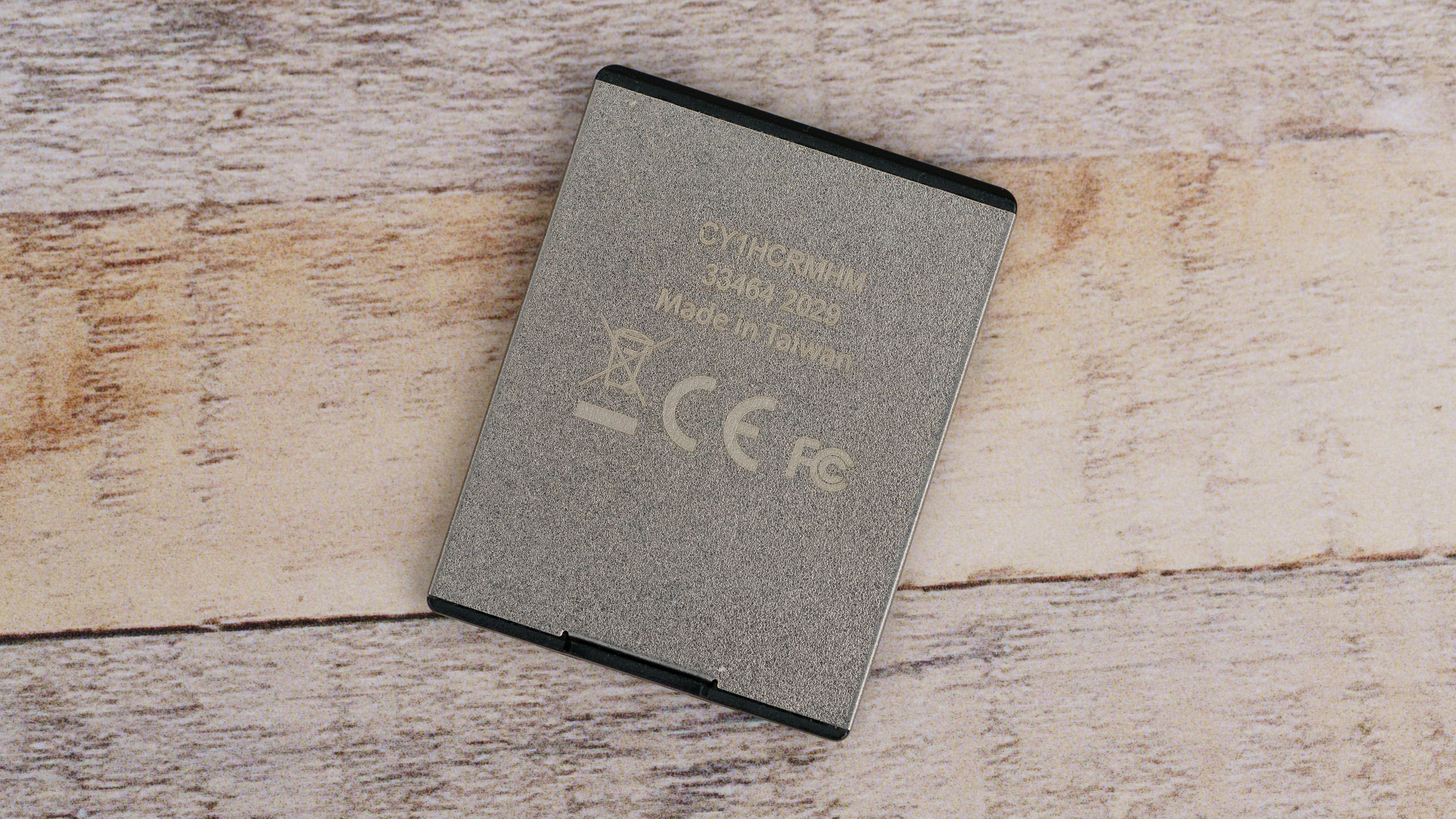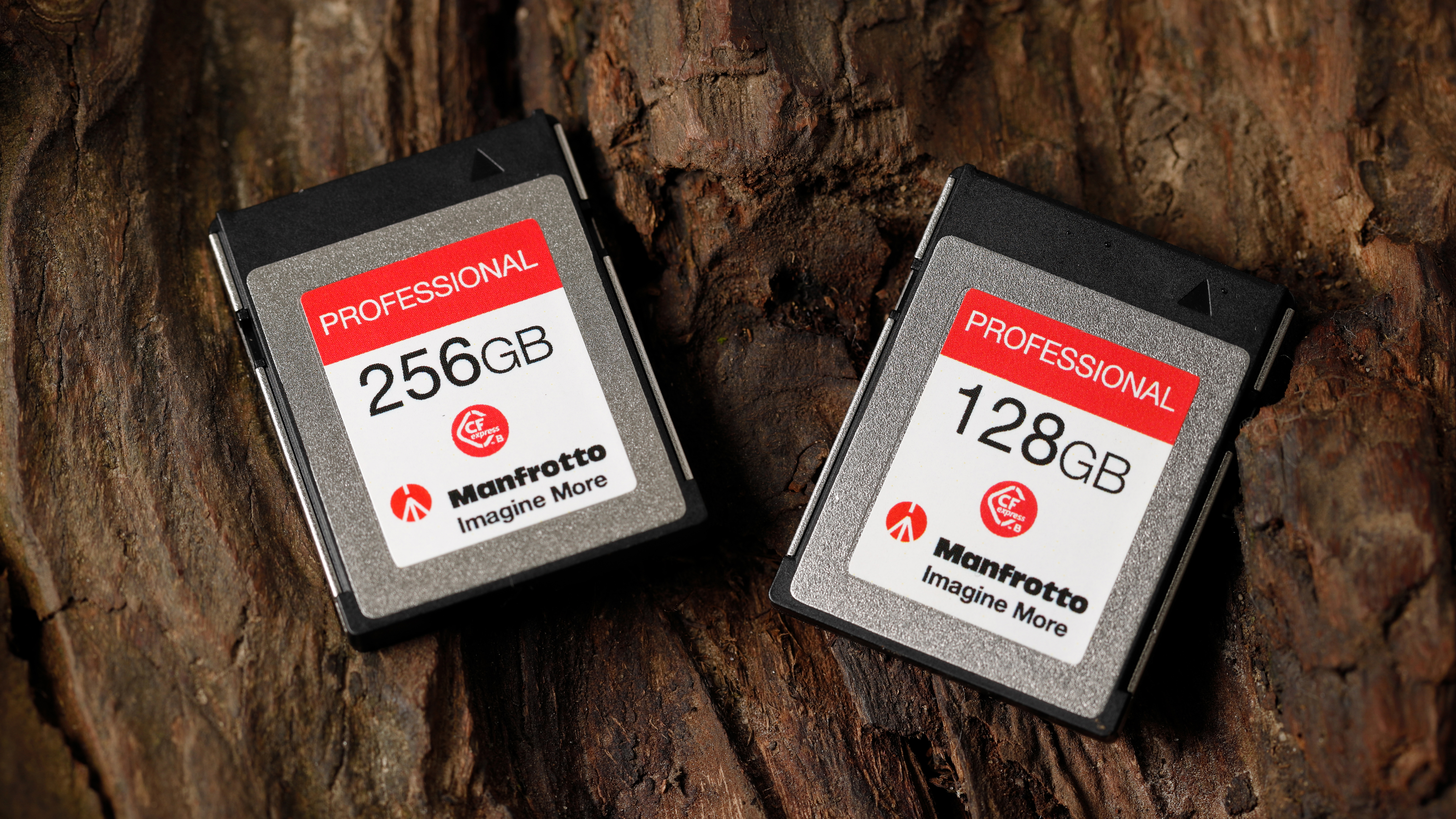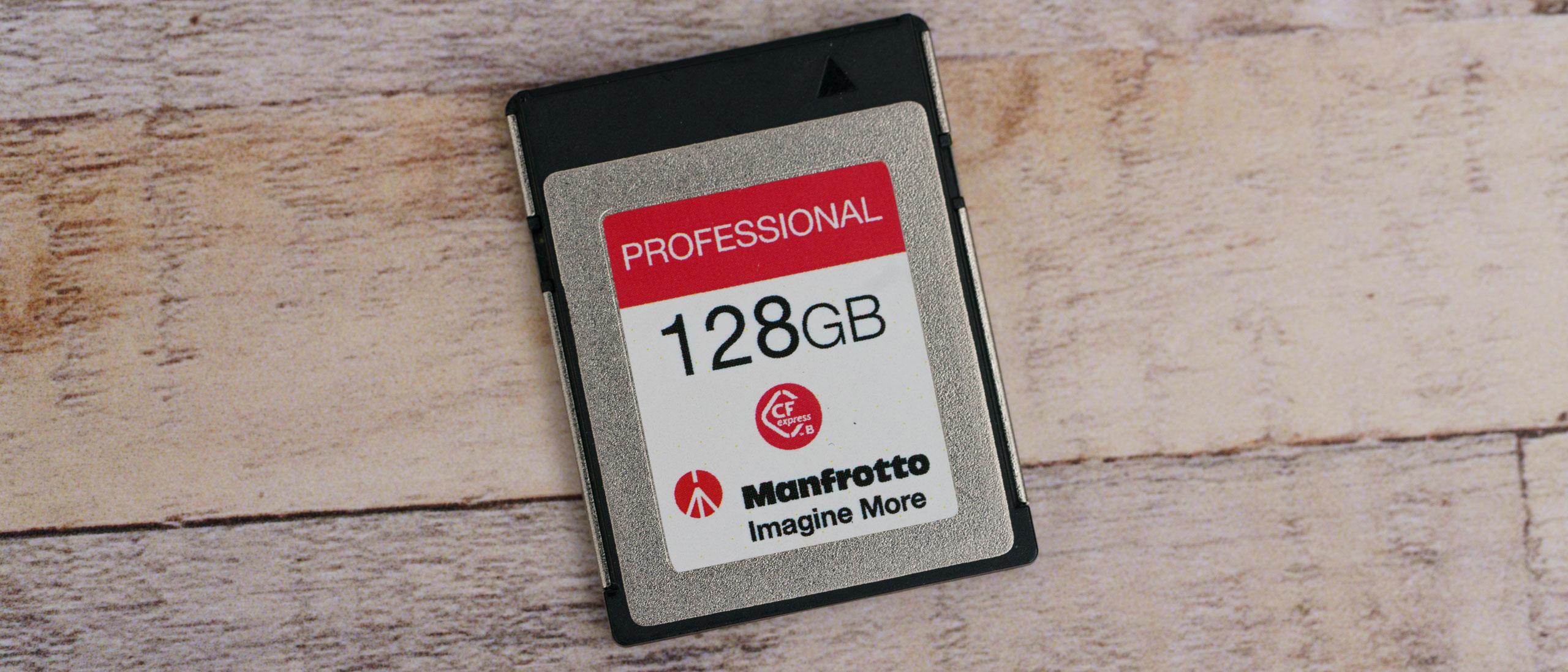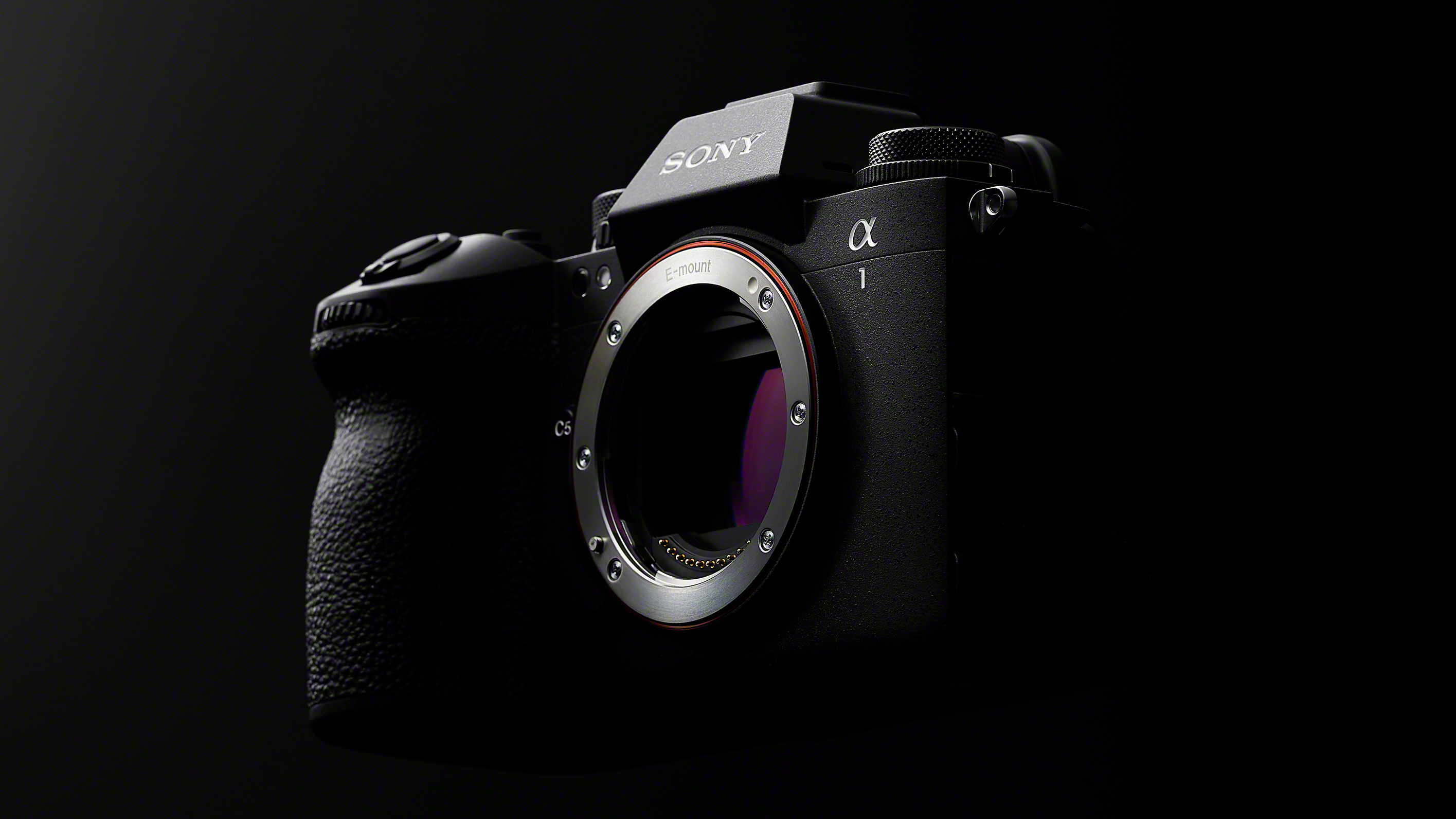Digital Camera World Verdict
It would be nice to see a wider range of capacities, particularly a 64GB option, but Manfrotto’s two CFexpress cards are competitively priced for their size. Although the 14-bit raw files burst depth can come up a bit short, the cards enable a 45.7Mp Nikon Z 7II to deliver the performance we expect for Jpeg shooting and 4K 60p video recording.
Pros
- +
Well-priced
- +
Good read/write speeds
- +
Robust construction
Cons
- -
Limited capacity range
- -
Not Manfrotto’s expert area
- -
Not the best performing CFexpress cards
Why you can trust Digital Camera World
Manfrotto only makes its Professional CFexpress type B card in two capacities, 128GB and 256GB. They both have quoted maximum read and write speeds of 1730MB/s and 1540MB/s respectively and use a PCIe 3.0 interface. Those rates put the cards well within the recommended requirement of at least 250MB/s for recording and playing back 3840 x 2160 60p or 3840 x 2160 50p movies with the Nikon Z 7II.
Manfrotto claims a minimum working temperature of -25°C and a maximum of 70°C for the cards.
Specifications

Max read speed: 1730MB/s
Max write speed: 1540MB/s
Available capacities: 128GB, 256GB
Build and handling
CFexpress Type B cards all look very similar but the Manfrotto Professional cards are a remarkable match for the Delkin Devices Black CFexpress cards. Even the etching on the back of the cards that proclaims they are made in Taiwan looks the same.
The Manfrotto cards also have the same metal casing on the front, back and sides as the Delkin Devices, Lexar and ProGrade Digital Cobalt CFexpress cards. It gives the cards an extra robust look and feel.
There’s little to say about the handling apart from the Manfrotto cards slot easily into a camera or CFexpress card reader and the tiny lip on the bottom of the back gives a little extra purchase when you want to remove one.
Performance

With the Manfrotto CFexpress card in the Nikon Z 7II with the ISO set to 100, I was able capture 42 14-bit uncompressed raw files or around 126 fine-quality Jpegs at 10fps. That’s more-or-less in line with Nikon’s stated maximum figures, only missing out by a few raw files, but exceeding the claimed Jpeg numbers. 4K recording at 60p for 30 minutes also proved unproblematic.
Connecting the card to a 2019 iMac via a Lexar Professional CFexpress USB 3.2 Gen 2x2 reader plugged into one of the Thunderbolt 3 ports and using Blackmagic Design Disk Speed Test, I measured a read speed of 906MB/s and a write speed of 917MB/s. Again, these numbers are down on the claimed figures but they are still perfectly satisfactory for recording 4K video at 60p and more.
In a real-world test, this translates to waiting less than 29 seconds to transfer 200 files from the Nikon Z7 II (100 raw and 100 Jpeg), taking up 10.33GB of space.
Verdict

While the measured speeds don’t match those claimed, the Manfrotto CFexpress cards enable you to capture long sequences of images and you’re not kept waiting around too long when it comes to transferring 45.7Mp images to your computer.
The fact that Manfrotto isn’t a brand that you immediately associate with memory cards, and the close physical similarity of the cards to those from Delkin Devices, suggests that Manfrotto is not the manufacturer. However, the price and performance of the cards make them worthy of attention.
Read more
Best memory cards
Best memory card readers
Best CFexpress cards
What is CFexpress Type A?
Angela has been testing camera gear from all the major manufacturers since January 2004 and has been Amateur Photographer’s Technical Editor and Head of Testing for Future Publishing’s photography portfolio (Digital Camera Magazine, PhotoPlus: The Canon Magazine, N-Photo, Practical Photoshop, Photography Week and Professional Photography magazines, as well as the Digital Camera World and TechRadar websites). She is the founder of SheClicks - a community group that encourages and supports female photographers.


